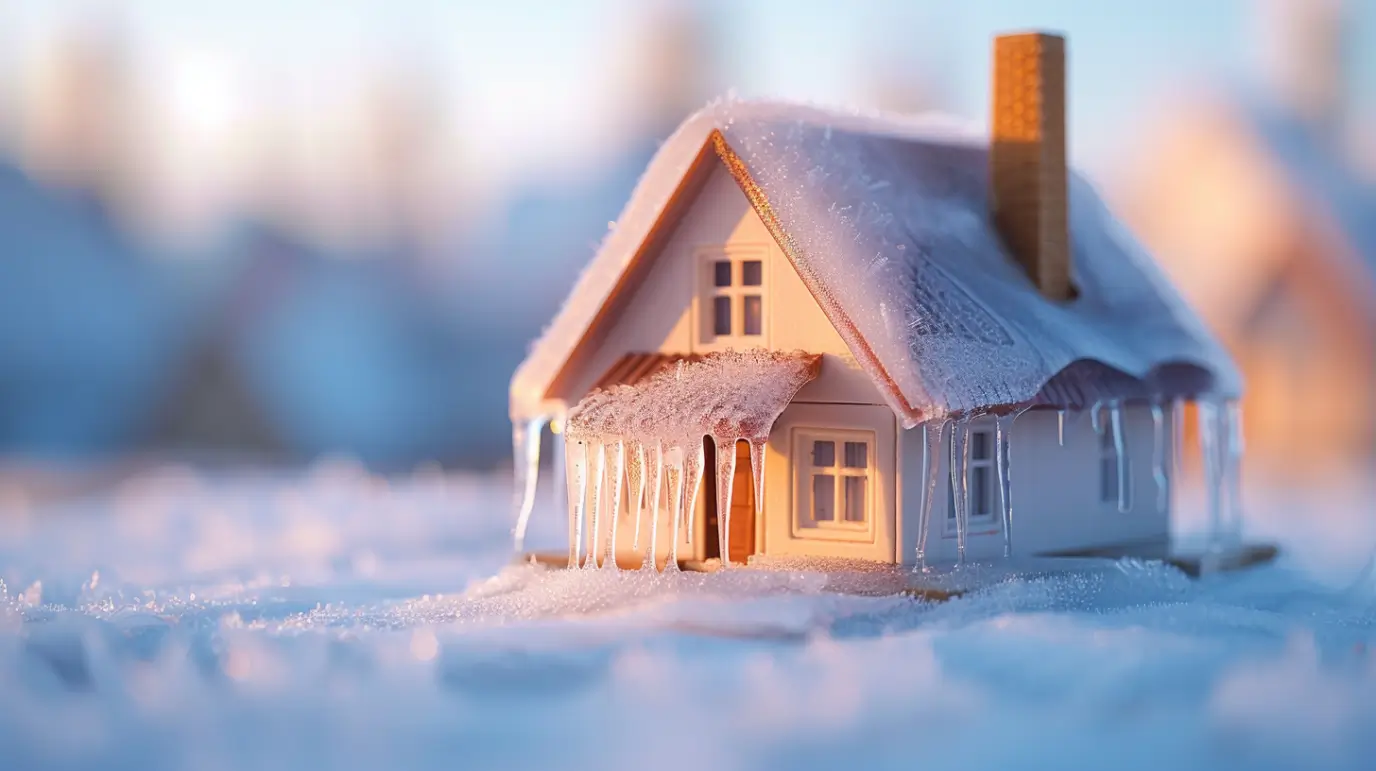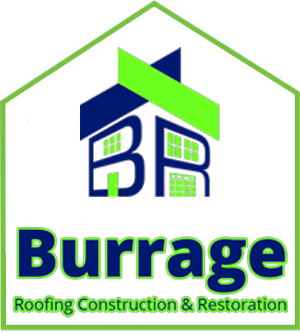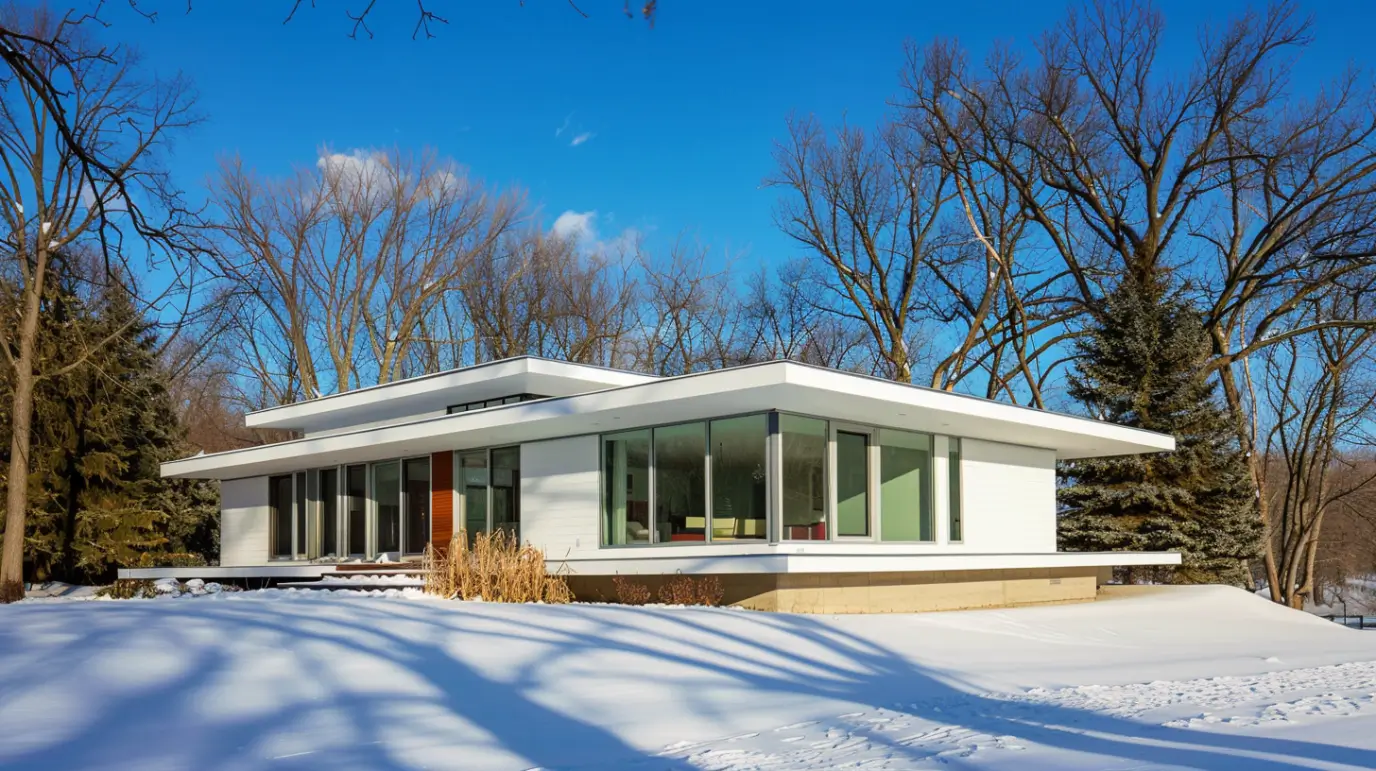Understanding snow load is vital for effective roof design, especially in heavy snowfall areas. At Burrage Roofing in Davenport, IA, we recognize that snow weight can accumulate on various roof pitches, risking structural damage if unmanaged. Each design we undertake must consider local snow load requirements, which dictate safe weight limits. Our analysis includes roof slope, snow density, and location-specific loads to ensure your roof can handle the demands of winter weather.
Understanding Snow Load and Roof Pitch
Understanding snow load dynamics and roof pitch is essential for effective roof design. Calculations consider factors like ground snow load and roof architecture. In snowy climates, steeper roofs shed snow more effectively, reducing unbalanced loads.
The importance factor determines specific snow loads based on risk categories. For example, structures in Iowa face unique challenges due to regional snowfall patterns. Assessing roof slope and using a snow load calculator ensures resilience against heavy snowfall, mitigating potential structural or water damage from accumulation or ice dams.
Contact Us
What is Snow Load?
Snow load refers to the weight of accumulated snow on a roof, which is crucial for structural integrity. It varies based on geographic location, roof design, and weather patterns, including the amount of snow. Understanding snow load helps in designing roofs that can safely support potential snowfall without risk of collapse.
How Roof Pitch Influences Snow Accumulation
Roof pitch significantly influences snow accumulation dynamics. Steep roofs efficiently shed snow, reducing the risk of unbalanced loads that can cause structural damage and lowering the risk of damage. As snow slides off, it minimizes impact on lower structures, preventing excessive weight buildup. Conversely, low-slope roofs tend to retain snow, increasing the risk of water damage and ice dams from trapped moisture.

Common Roof Pitches in Iowa and Their Snow-Load Implications
In Iowa, choosing the right roof pitch is vital for snow-load design due to heavy snowfall and snowy conditions. Low-slope roofs may be easier to construct but can struggle with snow accumulation, risking structural damage. They often need additional reinforcements and snow guards to prevent water damage from ice dams.
On the other hand, steeper pitches, like gable roofs, promote efficient snow shedding and reduce snow load on materials. The roof slope factor is crucial in snow load calculations, ensuring designs meet localized requirements. Understanding these factors is essential for homeowners and builders.
Low-Slope Roofs: Risks and Considerations
Designing low-slope roofs, including warm roofs, requires careful consideration due to unique challenges with snow accumulation. In snowy regions, unbalanced snow loads can cause structural damage. Flat roof calculations must account for persistent snow weight, unlike pitched roofs where snow slides off more easily. This accumulation stresses roofing materials and underlying structures.
Key factors include the roof’s slope, which affects snow density and moisture retention. Installing snow guards can mitigate risks by preventing drifts and ice dams during melting cycles. Understanding local snow load maps is essential to ensure low-slope roofs withstand heavy snowfall safely.
Steep-Slope Roofs: Advantages for Snow Shedding
Steep-slope roofs offer significant advantages in snowy climates due to their superior snow-shedding ability. With a pitch greater than 3:12, they promote snow sliding, reducing accumulation and the risk of unbalanced loads that can compromise structural integrity.
These roofs also help prevent issues like ice dams and water damage by facilitating effective drainage, thereby extending the lifespan of materials such as asphalt shingles and metal roofs.

Key Factors Affecting Snow Load on Roofs
Several things affect the snow load on roofs. These include climate, the strength of the building, and snow density. Knowing about these can help keep roofs in Iowa safe and working well through winter. For example, the kind of roofing material you pick makes a big difference when there is heavy snow.
Next, we will talk about how Davenport’s weather changes the snow load. We will also see why it is so important to pick the right roofing material if you want your roof to last in places with a lot of snow.
Regional Climate and Snowfall Patterns in Davenport, IA
Davenport, IA has a continental climate with cold winters and moderate snowfall. Snow composition often aligns with national averages, but localized weather can cause variations. Ground snow loads range from light dustings to heavy accumulations, especially in late winter.
Snow density and the risk of unbalanced loads require careful roof design considerations. Steeper roof pitches are preferred in Davenport as they promote snow shedding, reducing water damage and structural stress. Understanding regional snowfall patterns is vital for effective snow-load calculations, ensuring the safety and longevity of residential roofs.
Roofing Materials and Structural Strength
Choosing the right roofing materials is vital for a structure’s ability to handle snow loads. Different options, like asphalt shingles and metal roofs, offer varying durability against snow. Accumulated snow, especially on flat roofs, can cause structural damage if not managed properly.
The underlying framework’s strength is also crucial in managing snow load. A strong roof design considers factors such as slope and unbalanced snow loads to ensure it can support specific weight based on snow density. It’s essential to select high-quality materials that combine aesthetic appeal with the resilience needed for heavy snowfall.

Burrage Roofing’s Expertise in Snow-Load Solutions
For more than thirty years, Burrage Roofing has been working on roofing in Davenport. The company creates snow-load solutions that fit the local weather. There is a focus on strong roof structures so homes can meet Risk Category II rules. This means there is less chance of your home getting snow damage.
The company teams up with trusted suppliers like IKO and Richards Supply. This helps them make custom roofing systems that stand up to heavy snowfall. You can trust Burrage Roofing and its skilled workers to keep your home safe and protected when winter comes.
Award-Winning Partnerships and Certifications
Our work shows a strong focus on doing things right, as seen in our work with groups like IKO and James Hardie. Burrage Roofing is an IKO Craftsman Premier Installer.
We get high-quality materials from top suppliers such as SRS. This helps us build roofs that last and can handle lots of snow. With our BBB accreditation and other certificates, you get the best in roofing design and services for snowy climates.
Building Knowledge One Roof at a Time—Our Commitment to Safety
At Burrage Roofing, safety is at the core of what we do. Our slogan, “Building Knowledge One Roof at a Time,” shows that we want to help our clients with important roofing information. We work on roofs that can handle heavy snow. We also use materials that make your building’s roof ready for Iowa winters.
You can count on Burrage Roofing for a focus on safety and roofs that stand up to heavy snow. We use the best ways to take care of your building’s roof.
Trust the Experts
Understanding snow-load design, as recommended by the American Society of Civil Engineers, is crucial for roof integrity in snowy climates. By learning about snow load requirements, roof pitch, and specific loads for different roof types, homeowners can reduce risks. Tools like snow load calculators aid in accurate calculations, enabling informed choices about roofing materials and configurations.
Adopting best practices, such as proper roofing techniques and adequate slope, bolsters the structure’s resilience against heavy snowfall. Staying updated on changes in building codes ensures protection against structural damage and extends roof longevity, maintaining safety and performance over time.
Read our blog: How to Detect Hail Damage on Roofs
Frequently Asked Questions
How do I know if my roof pitch is safe for heavy snow?
To determine if your roof pitch can safely handle heavy snow, check local building codes and guidelines. Evaluate your roof’s angle; typically, pitches above 4:12 are more effective at shedding snow. Consulting a roofing expert can also provide tailored insights on safety for your specific structure.
What is the recommended roof pitch for snowy regions in Iowa?
The recommended roof pitch for snowy regions in Iowa typically ranges from 4:12 to 6:12. This slope effectively facilitates snow shedding, reducing the risk of snow accumulation and potential structural damage, while ensuring adequate drainage during melting periods.

